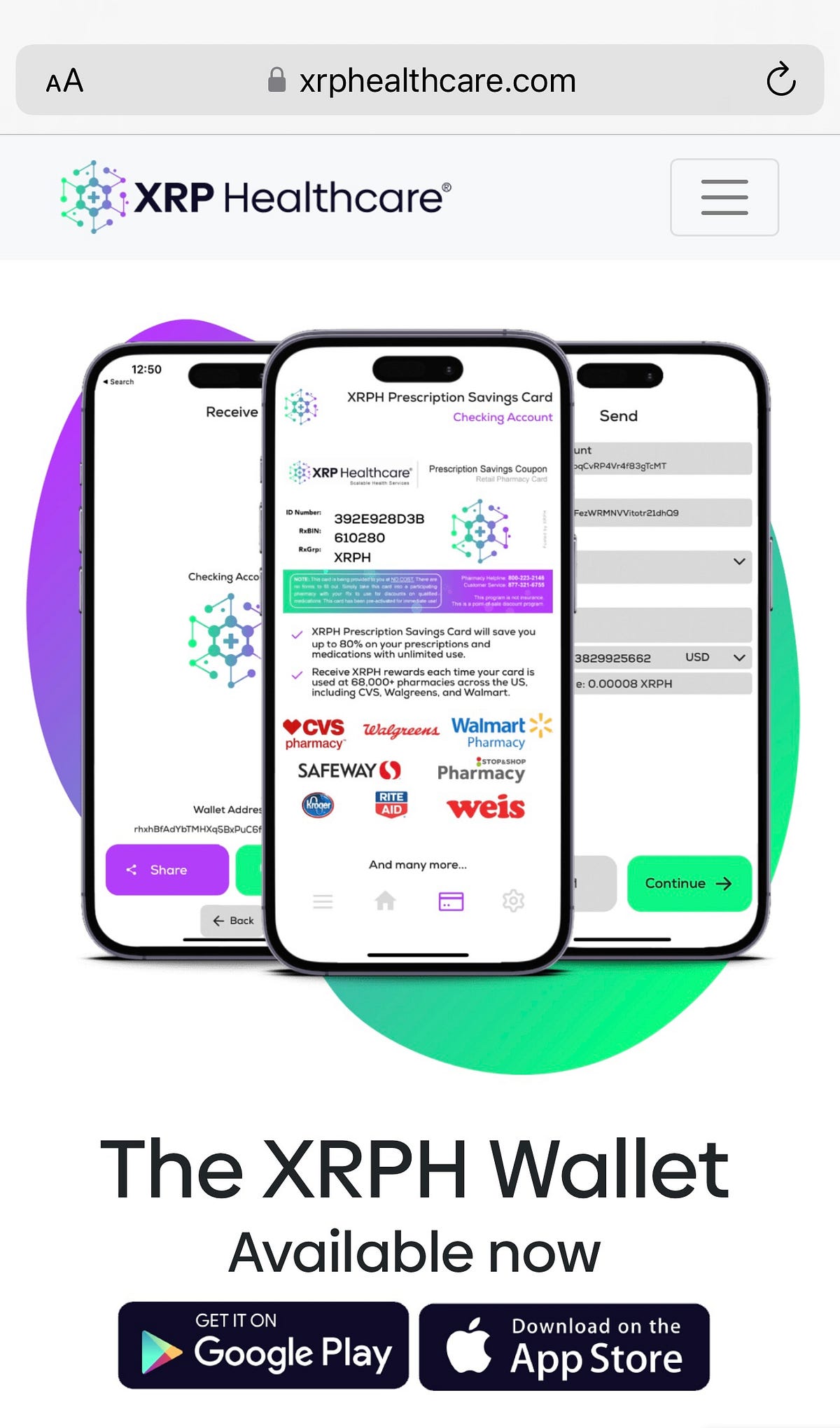Introducing the XRP Healthcare Decentralized Mobile Wallet: Empowering Users with Unparalleled Control, Savings, and Rewards
The XRP Healthcare team has announced the launch of its revolutionary XRPH Mobile Wallet which is available to download now on App Store and Google Play.
The cutting-edge wallet is designed to provide users with an unparalleled level of control over their digital assets, prioritizing security, anonymity, and convenience.
Complete Control with Non-Custodial Security
The XRPH Wallet is a non-custodial wallet backed by the XRP Ledger. With this powerful combination, users can enjoy complete control over their wallets, ensuring that every transaction is not just safe and secure but also entirely anonymous.
Open-Source Code Encouraging Decentralization
XRP Healthcare’s commitment to decentralization goes beyond just the wallet itself – they are proud to offer a license-free open-source code to the community, and by doing so encouraging the development of decentralized wallets, fostering innovation, and expanding the possibilities of the blockchain ecosystem.
Revolutionary XRPH Prescription Savings Card Integration
One of the most exciting features of the XRPH Wallet is the integration of the XRPH Prescription Savings Card. Users will have the opportunity to enjoy incredible savings with discounts of up to 80% on their prescriptions and medications, and the best part is, that these rewards go directly into the customers’ wallet. This feature comes with unlimited use, ensuring that users can save on their healthcare expenses without limitations.
Earn XRPH Rewards with Every Use
The innovative XRPH Prescription Savings Card is not only about saving money; it’s also about earning rewards. Customers will receive XRPH rewards every time their card is used at over 68,000 U.S.-based pharmacies, including renowned establishments like Walgreens, CVS, and Walmart – allowing every healthcare transaction to become an opportunity to accumulate valuable XRPH tokens which are paired with USDT on Bitrue, Bitmart and LBank, with more CEX exchange listings to be announced before December 2023.
Effortless Transaction Tracking on the XRP Ledger
The XRPH Wallet makes it effortless for users to monitor their transactions on the XRP Ledger. With a dedicated transactions page, you can easily keep track of your digital asset management on the XRP Ledger, ensuring complete transparency.
Multi-Currency Support for Global Accessibility
Having a community that spans the globe, the XRPH Wallet will allow users to view their wallet balance in multiple currencies, including USD, EUR, and GBP. This flexibility ensures that its wallet is accessible and user-friendly for everyone, regardless of their location.
A Glimpse into the Future: Decentralized Marketplace Connectivity
The XRPH Wallet is also poised to connect XRP Healthcare’s forthcoming decentralized marketplace. This expansion will further enhance the utility of its wallet, allowing users to explore and participate in their decentralized ecosystem to purchase traditional and non-traditional medication and prescriptions – XRPH wallet will help to facilitate fast payments for medical services and treatments within its own developing eco-system which will include the acquisition of medical centres, pharmacies, and hospitals in on the African continent through its subsidiary XRP Healthcare Africa, which they announced earlier in the year.
XRPH Wallet Audit
Director of Technology Nico Westerdale who audited the XRPH Wallet said “I’ve completed testing/auditing the app with help from Lead Engineer Evan Brooks, and can certify that user authentication and transfers are all working as designed”.
Nico has also worked on several high-profile projects including as Chief Technology Officer at IncentFit, a major player in the $61.95 Billion Dollar global corporate wellness market, he managed the development team in building and scaling it from the ideation stage toward its emergence as a global contender with corporate clients including the $11.3 Billion US Dollar Corning Inc, the University of Michigan, Magic Leap with an estimated Forbes valuation of $4.5 Billion US Dollars in 2016 and the $9.1 Billion US Dollar valued Blue Cross Blue Shield Association, a health insurance federation that provides health insurance in the United States to more than 106 million people. He worked closely with the CEO to transform business requirements into a flexible and customizable product that fulfilled over 200 corporate clients’ diverse wellness benefit plan needs and went on to play a significant role at GoPuff as the Director of Technology.
During his tenure, he oversaw several key aspects of the company’s technology and engineering teams, contributing to the company’s impressive growth. Here’s a summary of his accomplishments and responsibilities:
Continued...
https://medium.com/@XRPHealthcare/introducing-the-xrp-healthcare-decentralized-mobile-wallet-empowering-users-with-unparalleled-42c1ba8b9b2




























